8. La Dama Rossa Uccide Sette Volte – Bruno Nicolai
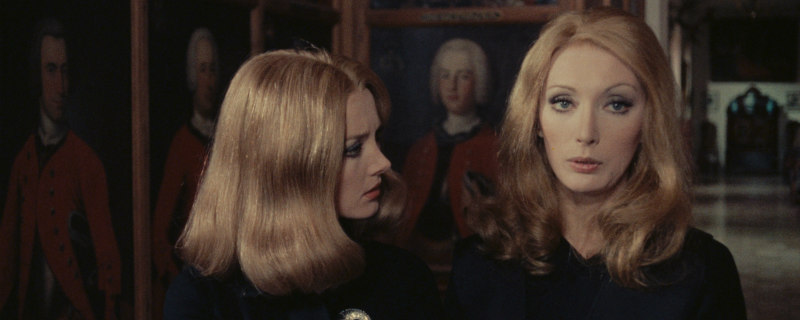
“The Red Queen Kills Seven Times” is a surprisingly great score for a surprisingly great film. Part of the Italian exploitation movement of the 70s (also known as Giallo), “La Dama Rossa” has successfully carved itself into our collective memory as one of those uniquely 70’s scores that encapsulates a fashion and an era, in a way that seems to be common with Italian composers like Mancini, Rota and Morricone.
Director Emilio Miraglia had a limited carrier in Giallo, while composer Bruno Nicolai seemed to go back and forth into the genre and continued a successful career in film scoring. He was a close friend and collaborator of Ennio Morricone, which led him to include in his work titles such as Sergio Leone’s “The Good, the Bad and the Ugly” (1966) and Tinto Brass’s “Caligula” (1979). However, Nicolai became best known for scoring the Giallo films of director Jess Franco. His slasher past was paid homage when his work was featured in Quentin Tarantino’s “Kill Bill: Volume 2”.
7. Howards End – Richard Robbins
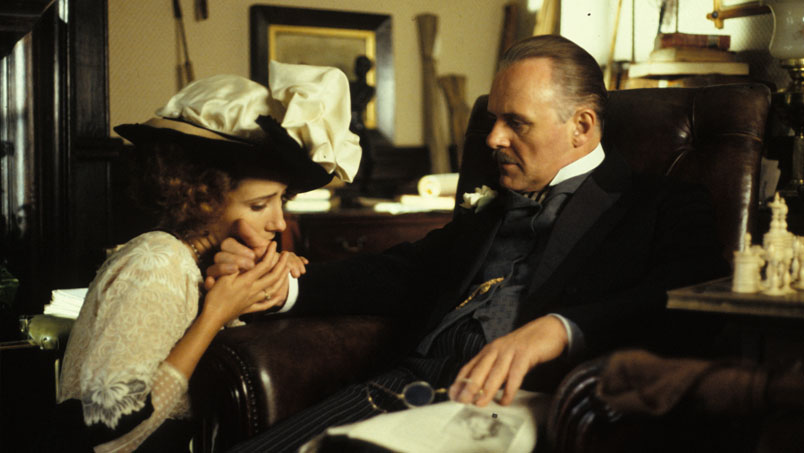
James Ivory’s acclaimed period drama went as quickly below the radar as it had sprung to the top in the early 90s. Considered by many a masterpiece, it was nominated for nine Oscars and it won three, among which include Best Original Score. Unfortunately today it seems to be remembered only by period drama fans and film buffs.
The film holds an exceptional cast starring Emma Thompson, Anthony Hopkins and a still very promising Helena Bonham Carter, to tell a dramatic story about the war of the classes in England at the turn of the 20th century. The story is shown through three families who represent each class: the Wilcoxes, the Schlegels and the Basts. When their lives cross, catastrophe is inevitable between them.
Richard Robbins is mostly known for his collaboration with Ivory in a 44-year professional relationship with the director that has been noted down in the Guinness Book of World Records. He was to his death one of the core assets of Merchant Ivory Films. As an artist, his subtle ways of creating themes that introduced us to a certain period and place in time (usually England around the beginning of the 20th century) was one of his biggest talents, the finest example of which is by far is his scoring for “Howards End”, for which he was named for a Sammy Film Music Award.
Based on a combination of Percy Grainger’s works, Beethoven’s 5th Symphony and Robbins’ personal style, the dramatic introduction takes us to a tragedy of Shakespearean proportions and then lands us gently in the romantic environment of an English belle-epoque garden. In the first few minutes of the film, we are introduced to our central conflict only through music. Paved with romanticism, sensitivity and murky undertones, it is surprising that this American duo (Ivory and Robbins) managed to convey the class struggle in such a specifically British way.
6. The Portrait of a Lady – Wojciech Kilar
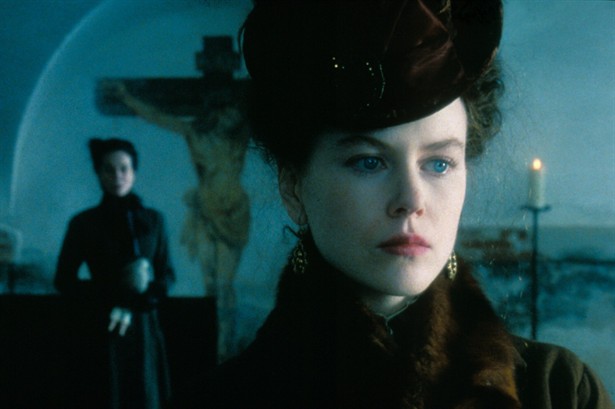
New Zealand director Jane Campion had already proved that she had impeccable taste in music with her 1993 feature “The Piano”, featuring a magnificent score by Michael Nyman that was met with great acclaim. This she continued with her follow-up, Henry James’ stunning novel “The Portrait of a Lady” three years later, featuring a young Nicole Kidman, John Malkovich and Barbara Hershey, but this time with a new name at the score’s helm, that of Wojciech Kilar.
Kilar had already been one of Poland’s most esteemed classical music writers. He was critically respected for his symphonies, sonatas and chamber music and had become a member of the Polish avant-garde movement of the 1960s. After coming to the United States, Kilar has easily been a rising star in Hollywood compositions since the early 90s. Before taking on Campion’s feminist masterpiece, he had already scored Polanski’s “Death and the Maiden” (1994) and Francis Ford Coppola’s “Bram Stoker’s Dracula” (1992).
Eventually he would go on to score more than 100 feature films, among which include Polanski’s “The Pianist” and “The Ninth Gate”. Kilar’s score in “The Portrait of a Lady” is quite low-key and sentimental in the way that most scores were expected to be in the 90s, contained in its drama and expression but still reasonable in its expression. Then comes the film’s dominant theme and everything changes.
The use of flutes in a simple modern theme can only be described as a breath of fresh air to the rest of the score, and has a truly foreign tone that manages to enrapture brilliantly the sentiment and position of our main heroine. Similarly as with “The Piano”, music is a substitute for dialogue. Through the film’s predominant melody, one can hear the protagonist’s gentle struggle for freedom and the absolute uniqueness of her voice amongst her set surroundings.
5. Eternity and a Day / The Weeping Meadow – Eleni Karaindrou
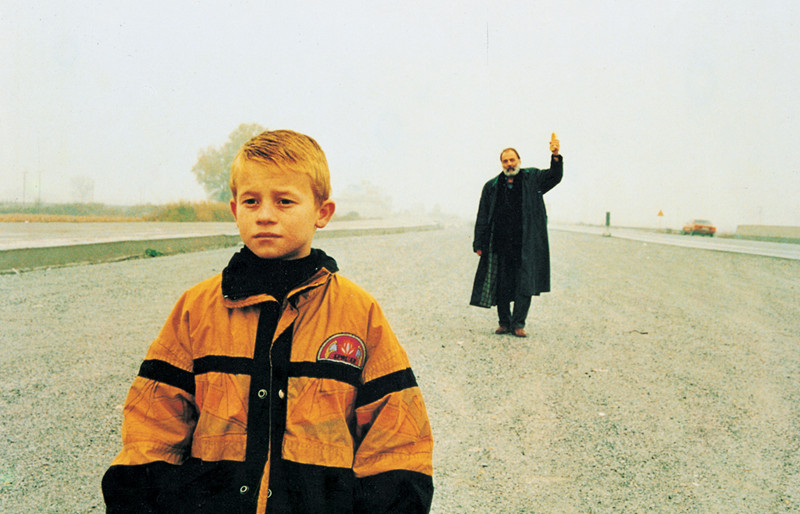
Longtime professional partners, director Theo Angelopoulos and composer Eleni Karaindrou, have produced some of the most poetic films of the 20th century. Their first collaboration came in 1984 with the film “Journey to Kythira” and continued on to the director’s death in 2012.
During this time, Karaindrou has composed music for more than 18 feature films and a wide selection of television series and plays, scoring among others the works of Chris Marker, Tonia Marketaki, Jules Dassin and Margarethe von Trotta. Also, she recently made a more unusual contribution, George Miller’s “Mad Max: Fury Road” (2015) with the pieces “Elegy for Rosa” and “Refugee’s Theme”, which was first composed for Angelopoulos’s “The Suspended Step of the Stork.”
In their long-lasting relationship, the Greek duo complemented each other going in and out of their native themes and aesthetics. Angelopoulos is frequently enamoured with the themes of immigration and the history of the left-wing and communism, the transformation of power and the idea of time. Known for his long takes, his work demands a minimalist long-lasting score for them to be enwrapped in, which then instantly transforms into the very distinct melodies of Karaindrou.
“Eternity and a Day” (1998) could arguably be thought of as Karaindrou’s peek. Starring Bruno Ganz and Isabelle Renauld, the film portrays the journey of an immigrant Albanian boy and an old poet. The film won the Palme d’Or at the Cannes Film Festival and the soundtrack is both noted for its familiar melancholy in its long passages but also its simplistic happiness in its distinct main theme.
“The Weeping Meadow” (2004), starring Alexandra Aidini and Nikos Poursanidis, was supposed to be the first of a trilogy that was never completed. Again, its theme focused on refugees and centred the plot around a love story. Karaindrou develops a dialogue between the simple romantic drama of the protagonists by accordion and the wider tragedy in which they are conveyed in through the strings.
A combination of traditional rhythms, instruments and melodies, with more a more modern minimalistic attitude, conveys in her work the necessary melancholy and opposing sentiments that are carried within the film’s tragic protagonists. She was nominated for her score for the European Film Awards in the category of European Composer in 2004.
4. It’s All About Love – Zbigniew Preisner

Zbigniew Preisner is among the most respected film composers of today. The Polish master is best known for his work with director Krzysztof Kieslowski, which produced the widely acclaimed “Colors Trilogy” (1993 – 1994), “Dekalog” (1989) and “The Double Life of Veronique” (1991). Other collaborations include Louis Malle’s 1992 “Damage” and works from Agnieszka Holland and Héctor Babenco.
His music is always dramatic, grandiose and romantic, revealing influences from the classical masters, along with romantic Polish composers of the 19th century. Naturally when the news came that he was teaming up with Dogme co-founder Thomas Vinterberg, who was just making his American debut, expectations were set high. Unfortunately the film was a flop and was met with disappointment from critics and audiences alike.
“It’s All About Love” is set in a near end-of-the-world future, in which a couple played by Joaquin Phoenix and Claire Danes try to save their failed marriage as they attempt to escape a dangerous conspiracy as the world is collapsing around them. The film’s plot is all over the place, and one could say that the acting is also quite out of focus; however, the incredibly unique tone it conveys, which mysteriously combines the American lifestyle with the Nordic landscape and literally flying people in Uganda, is something that follows you.
Preisner’s haunting dark music gives the film a heavy, almost alien aspect, reminiscent of a requiem to the dying earth that contrasts the couple’s rekindling love and charges the film’s already surrealist atmosphere. It is evident in a way that both Preisner and Vinterberg were experimenting with something new and while many didn’t find the outcome appealing, its risk-taking is respectable and in many ways fruitful, honest and mystifying enough to overcome the film’s weaknesses. Perhaps in time both will be recognised as underrated gems.
3. The Blue Lagoon / Conan the Barbarian – Basil Poledouris
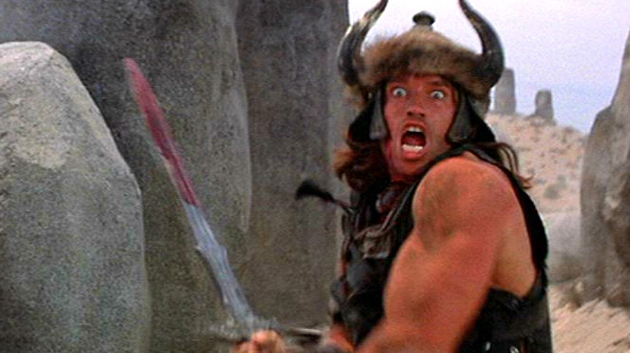
Basil Poledouris is one of those composers who, although widely acclaimed, just didn’t manage to become a household name among audiences, aside from the fact that he is often thought of as one of the most notable Hollywood composers of the 80s. An Emmy winner for his work on the TV series “Lonesome Dove”, he was also commissioned to write music for the opening of the Centennial Olympic Games in Atlanta. The Greek-American’s career began in the mid-1970s with a handful of television projects and relatively low profile films, until in came “Big Wednesday” and “The Blue Lagoon”.
“The Blue Lagoon” was an 80’s hit directed by former classmate Randal Kleiser (director of “Grease”), starring a very young Brooke Shields and Christopher Atkins in the story of two children stranded on a tropical island who discover adulthood.
The film often has an almost documentary feel to it as it intercuts between the love story of the young protagonists to shots of the island’s nature and its wildlife. This is greatly complemented by Poledouris’s score, in which it seems the heroes are the ocean, gentility, horror and innocence. The music withholds a freshness that reveals Poledouris’s own “virginity” into feature film scoring. It is easy to see the contribution of classical influences along with a very distinct and insightful voice that is gradually shaping.
The success of “The Blue Lagoon” shot him straight into Hollywood and two years later he undertook the music of the larger-scale feature “Conan the Barbarian” with Arnold Schwarzenegger and James Earl Jones in the leads, which went on to win a Golden Globe and produce a series of sequels. The film’s score is what the composer is best known for and is thought of as one of the best soundtracks of the 80s.
It is obviously a more mature work and signifies his later transition into 80’s fantasy-action dramas that peaked with his long-lasting collaboration with Paul Verhoeven, which gave us works such as “RoboCop” (1987) and “Starship Troopers” (1997).
2. Alphaville – Paul Misraki
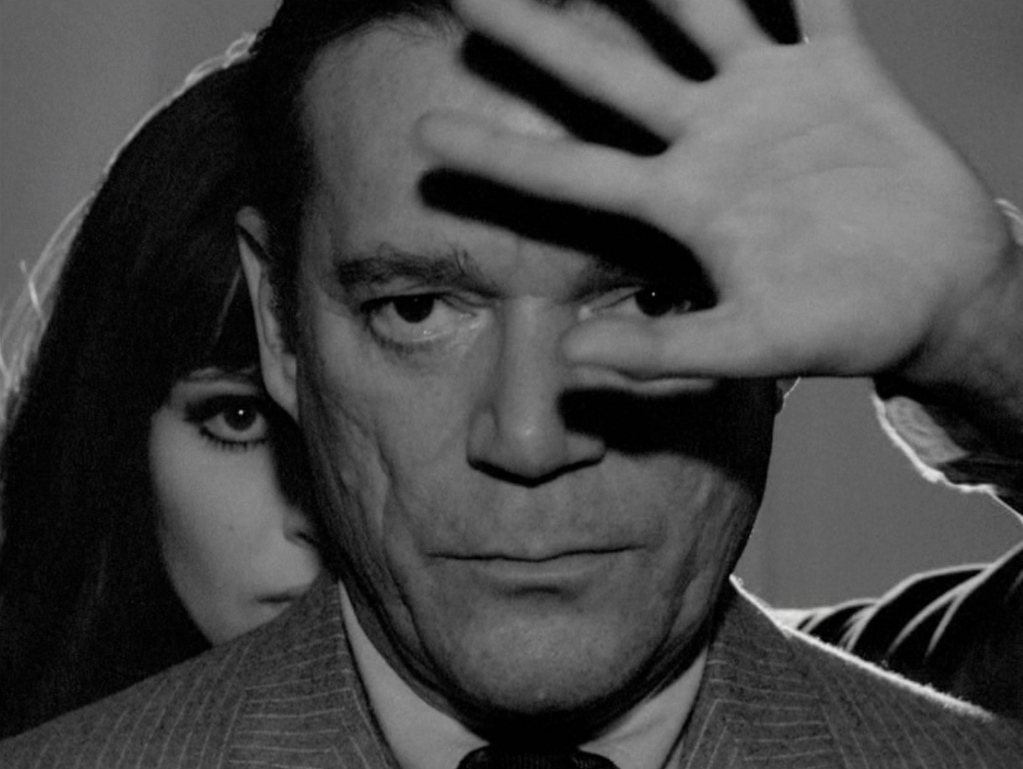
Paul Misraki is one of the great names affiliated with the rise of Chanson Francaise and is noted with introducing swing to the French public. He was part of the prolific band Les Collegians and his contribution to film scoring counts more than 150 titles with prolific directors such as Orson Welles, Jean-Luc Godard, Luis Bunuel, Claude Chabrol and Roger Vadim, to name a few.
It is no accident that the great composer collaborated with some of the most notable names in French and global cinema. Indeed, as is the case with many composers, he was part of the ingredients that made the great director’s work so distinct and respectable.
Misraki himself carried a grand mix of musical traditions, bearing the East, the French landscape of which he became a part, and his Jewish origin that forced him to flee France during the war. His creativity and his capability to transform according to the demands of each project is what turned Misraki into an unknown legend. In 1990 he was made Chevalier de la Legion d’Honneur and an Officer des Arts et des Lettres.
Though much of his contributions are wildly overlooked in the fan’s consciousness, one could note “Alphaville” as Misraki’s most marvellous and criminally overlooked achievements. Combining both gentle and mysterious, off-putting and sincere, “Alphaville” is a score that tells the story before the script does. Often blunt and decisive but also contrasting in romance and ever-so-marvellously “French”, Misraki encapsulates with his score the melodrama and ideas that are so distinct in the work of Godard.
1. The Taming of the Shrew / Romeo and Juliet – Nino Rota
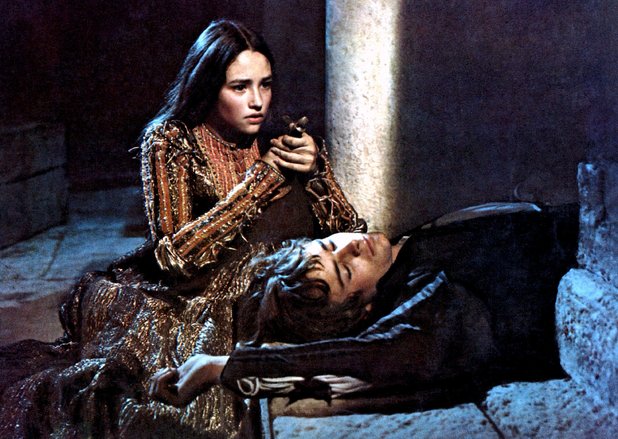
Nino Rota is best known for his long-lasting collaboration with Federico Fellini and his famous Sicilian melodies for Francis Ford Coppola’s “The Godfather.” However, his Shakespearian work and relationship with yet another star of Italian cinema is much lesser known or indeed decently appreciated.
“The Taming of the Shrew” is a 1967 production featuring then-power couple Elizabeth Taylor and Richard Burton at their most enjoyable. It is part of a series of films by stage director Franco Zeffirelli, who took a break from his operatic work with longtime friend Maria Callas to try out his talent in Shakespearean dramas on film. The film’s score incorporates themes and traditional instruments of Italy, making you take a journey through time.
After the success of his first full-length feature, Zeffirelli went on to direct what is now considered a classic depiction of “Romeo and Juliet”, starring the teenage talents of Olivia Hussey and Leonard Whiting. For the first time ever, Shakespeare was introduced as a teen drama in the most accurate way possible. From this, Rota gave us a passionate and sensitive main theme that decorated the tragedy’s gentle performances.
Both the film and the music were a great success. The main theme was re-imagined by Hollywood darling and otherwise talented compatriot, Henry Mancini, to become the hit “A Time for Us”, which eventually overshadowed Rota’s sensitive score and replaced it with a much cheaper and simplified version of itself.
In both instances of Rota’s collaboration with Zeffirelli, his music not only manages to capture the feel and landscape of the Italian Renaissance where the films take place, but it also manages to be very Shakespearean in itself. By combining comedic, melodramatic, or deeply tragic nuances with Italy’s grand musical tradition, Rota brings to life the codes that are necessary of a teenage tragic love story or a popular comedy on the battle of the sexes.
Honourable Mentions:
I Am Dina – Marco Beltrami creates a haunting melody that follows you years after your disappointment with the film.
Children of Men – John Tavener may have been a Knight and an established classical music composer in the UK, and he may also have scored one of the best films of the 21st century so far, but he never gets any credit for it. He should.
Moonrise Kingdom – Alexandre Desplat ingeniously incorporates elements of Hadjidakis and French New Wave in his almost experimental soundtrack, in order to craft an innocent and bizarre childhood romance that only Wes Anderson can imagine.
Mr. Turner – Gary Yershon was nominated for an Oscar for this composition. It’s a great pity none of us actually listened to it.
Cyrano de Bergerac – Jean Claude Petit is criminally underrated for his exceptional use of French baroque in producing the perfect score to one of French cinema’s biggest period diamonds.
Island of Lost Souls – Jane Antonia Cornish stretches her abilities in fantasy scoring and delivers a remarkable job that is lost due to the film’s limited release. The female James Newton Howard, only even more underrated.
Like Crazy / Marie Antoinette – Dustin O’Halloran recently met acclaim thanks to his scoring of “Lion”, but he had already proved he was the next big thing in film composition with the meditative simplicity with which he scored both of the above.
Partisan – Daniel Lopatin (Oneohtrix Point Never) creates eerie, creepy and addictive music with synth that makes you love synth even if you hated it. Possibly the next big thing in a different kind of scoring.
Author Bio: Bio: Ismene Daskarolis is an indie filmmaker and cultural journalist focusing on film. She lives in Berlin and Athens and likes great cinema, great wine and great music. She also likes cats.